Related Research Articles
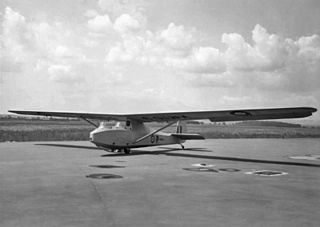
The Slingsby T.24 Falcon 4 was a two-seat training glider designed in the UK just after World War II for ATC use. It was judged too expensive for production and only three were completed.

The Slingsby T.43 Skylark 3 was a single seat Open Class sailplane developed from the Skylark 2 with an extended wingspan. It won the 1960 World Gliding Championships.
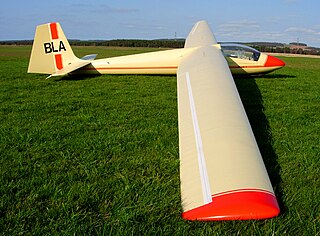
The Slingsby T.50 Skylark 4 was a British single seat competition glider built by Slingsby Sailplanes in the early 1960s. It sold in numbers and had success at national, though not world level competition.

The Akaflieg Darmstadt D-7 Margarete, often shortened to Darmstadt D-7 Margarete, was one of the earliest two seat monoplane gliders, designed and built by German university students in 1923.
The Akaflieg Darmstadt D-34 sailplanes were a series of experimental single seat sailplanes, designed at the University of Darmstadt in the 1950s and early 1960s to explore the structural and aerodynamic advantages of the then emerging plastics and composite materials.
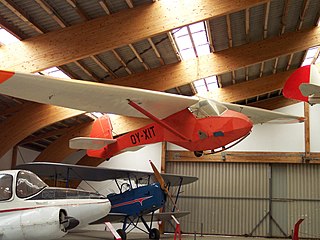
The Raab Doppelraab is a German training glider produced in the early 1950s which proved popular with gliding clubs. A student pilot was accompanied by an instructor in a small space behind him, sharing the control column and with a dual rudder bar. The Doppelraab could be flown solo for later basic training.
The VTC Delfin is a competition single seat Standard class glider designed and built in Yugoslavia in the 1960s. It had some success in national competitions and went into small scale production.
The CVV 2 Asiago is a simple, single seat glider designed and built in Italy in the mid-1930s, the second of a series of gliders from the Milan Polytechnic and the first go into production.
The Teichfuss Cicogna was an Italian tailless single-seat motor glider designed by Luigi Teichfuss and flown in 1936.
The IIL IS-7 was a two-seat, sailplane designed by Iosif Șilimon and built in Romania in the late 1950s. Only one prototype was built.
The IIL IS-8 was a two-seat sailplane designed by Iosif Șilimon and built in Romania in 1960. They served with Romanian gliding clubs.

The RRG Falke of 1930 was a secondary training glider designed by Alexander Lippisch in Germany and intended to provide better performance than his earlier RRG Prüfling whilst being easier to fly because of its inherent stability. It was sold as plans for both club and commercial production and was built in Germany and abroad.
The Emelyanov KIM-3 Stakanovets was a record breaking two seat glider, one of the first high performance sailplanes to use forward swept wings. It repeatedly set new international distance records in the late 1930s and early 1940s.
The Schneider ES49 is a two-seat glider trainer, designed, first flown in late August 1951 and commercially produced in Germany but later built from plans by gliding clubs in Australia. A major redesign there led to the ES49B Kangaroo.
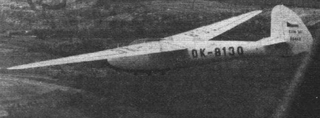
The Zlín Šohaj series of club gliders began as a post World War II development of the DFS Olympia Meise. A large number were built in the 1940s and '50s.

The Oberlerchner Mg 19 Steinadler is an Erwin Musger designed two seat tandem trainer glider built in Austria and first flown in 1951. Several examples of this successful aircraft, which competed in the two seat class at two World Gliding Championships in the 1950s, were still flying in 2000.

The Rotter Karakán or just the Karakán was a high performance Hungarian single seat sailplane. Two were built and set many national gliding records in the years before World War II.

The Gyöngyös 33 was the first sailplane designed in Hungary, making its first flight in June 1933. It set several national records, using ridge lift rather than thermal soaring.
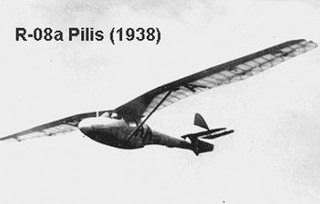
The Rubik R-08 Pilis was a Hungarian single-seat, advanced training glider first flown in 1939. It was very successful; 269 were built in batches, the first starting in 1939 and the last in 1956.

The single-seat Kocjan Komar (Gnat) intermediate trainer, designed in 1932, was the leading and most produced sailplane in pre-war Poland. Production was resumed after World War II as the IS-B Komar and it remained in use until 1965.